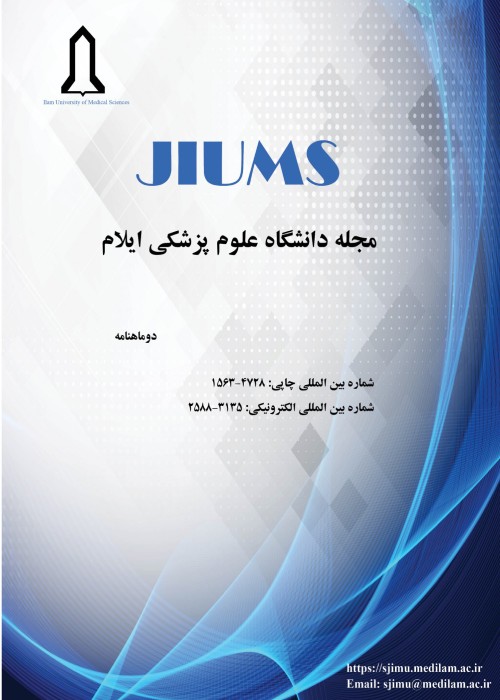Determination and Sequencing of Genotypes of Echinococcus granulosus from Stray Dogs isolates with Cox1 Gen in Ilam, West of Iran
Author(s):
Abstract:
Introduction
Hydatidosisis one of the most common diseases of human and animals from Cestoda class with worldwide distribution. This disease of both public health and economic damage is very important. This parasite has a high genetic diversity and includes a complex of different genotypes .Usually in areas where disease is endemic; biologically there is a relatively high genetic diversity in parasites. Studies in different parts of the world demonstrate that genotype variation and the nature of Echinococcus granulosus influenced on the life cycle of parasite, transmission routes, pathogenesis, and antigenicity, immunogenicity, response to medication, epidemiology and control of the disease. The main aim of the present study was to investigate genotype diversity of E. granulosus which was isolated from stray dogs in Ilam city, West of Iran.Materials and Methods
Adult worms were collected from the small intestine of the stray dogs. DNA was extracted from the adult worms and the partial mitochondrial DNA Cytochrome Oxidasesubunit 1 (Cox1) was amplified by PCR then the products were digested by using Alu1 and HpaII restriction enzymes. Finally, a number of PCR products were bidirectionally sequenced. Sequence and phylogenetic analyses were performed using MEGA6 (Mega software. net).Findings: Totally, twenty stray dogs out of 75 (26.66%) showed infection with E. granulosus. Amplified PCR product for all isolates was a band of approximately 450bp. Alu1 digested the product into two bands of approximately 175bp and 275bp fragments, while the HpaII cut the product into 265bp and 185bp fragments for all dog samples. Based on the DNA sequencing and PCR-RFLP results, dog samples indicated to pertain the genotypic similarities. According to the phylogenetic tree, there is at least one genotype of parasite, which belongs to E. granulosous sensu stricto (G1G3) complex and overall isolates sequences of mtDNA indicated 100 % homology with references G1, G2, and G3 sequences in the GenBank database.
Discussion &
Conclusions
The results of this study indicated that genotypic similarities between the sizes of DNA bands of E. granulosus from all isolates with PCR-RFLP and sequencing methods indicated the occurrence of similarities genotypes of E.granulosus in Ilam region. There is at least one genotype of parasite, which belongs to E. granulosous sensu stricto(G1-G3)complex.Keywords:
Language:
Persian
Published:
Ilam University of Medical Science, Volume:24 Issue: 6, 2017
Pages:
97 to 106
magiran.com/p1665778
دانلود و مطالعه متن این مقاله با یکی از روشهای زیر امکان پذیر است:
اشتراک شخصی
با عضویت و پرداخت آنلاین حق اشتراک یکساله به مبلغ 1,390,000ريال میتوانید 70 عنوان مطلب دانلود کنید!
اشتراک سازمانی
به کتابخانه دانشگاه یا محل کار خود پیشنهاد کنید تا اشتراک سازمانی این پایگاه را برای دسترسی نامحدود همه کاربران به متن مطالب تهیه نمایند!
توجه!
- حق عضویت دریافتی صرف حمایت از نشریات عضو و نگهداری، تکمیل و توسعه مگیران میشود.
- پرداخت حق اشتراک و دانلود مقالات اجازه بازنشر آن در سایر رسانههای چاپی و دیجیتال را به کاربر نمیدهد.
In order to view content subscription is required
Personal subscription
Subscribe magiran.com for 70 € euros via PayPal and download 70 articles during a year.
Organization subscription
Please contact us to subscribe your university or library for unlimited access!


